

Raleigh W Durham W Chapel Hill
VOL. 40 NO. 16
CONTENTS
NEWS
4 A Q&A with Hunter Beattie on the process of aquamation.
BY JASMINE GALLUP6 As everywhere, climate change is coming for the Triangle.
BY THOMASI MCDONALD8 Raleigh recycles—so what's up with the conspiracy theories?
BY JASMINE GALLUPBest of the Triangle 2023 Wake County
Black Belt Eagle Scout performs at The Pinhook on Wednesday, April 19. (See calendar, page 28.)
OF THE PINHOOK
ARTS & CULTURE
24 The North Carolina Museum of Art's new spring exhibitions explore Black histoy and culture through the lens of freedom and the future.
 BY ZARI ALYSSA TAYLOR
BY ZARI ALYSSA TAYLOR
26 NPR Music's annual Tiny Desk Contest gives independent artists a shot at making it. This year, more than one hundred North Carolina musicians threw their hats in the ring.
BY GRANT HOLUB-MOORMANCORRECTION In last week's story "Home Truths," a name was incorrectly spelled as Aya Shabu. The correct name is Aisha Booth.
W E M A D E T H I S
PUBLISHER
John Hurld
EDITORIAL
Editor in Chief
Jane Porter
Managing Editor
Geoff West
Arts & Culture Editor
Sarah Edwards
Staff Writers
Jasmine Gallup
Lena Geller
Thomasi McDonald
Copy Editor
Iza Wojciechowska
Interns
Sarah Innes, Nathan Hopkins
Contributors Spencer Griffith, Brian Howe, Kyesha Jennings, Jordan Lawrence, Glenn McDonald, Nick McGregor, Gabi Mendick, Shelbi Polk, Dan Ruccia, Rachel Simon, Byron Woods
CREATIVE
Creative Director
Nicole Pajor Moore
Graphic Designer
Izzel Flores
Staff Photographer
Brett Villena
ADVERTISING Publisher
John Hurld
Sales Digital Director & Classifieds
Mathias Marchington
CIRCULATION
Berry Media Group
MEMBERSHIP/ SUBSCRIPTIONS
John Hurld
INDY Week | indyweek.com
P.O. Box 1772 • Durham, N.C. 27702 919-695-4848
EMAIL ADDRESSES
first initial[no space]last name@indyweek.com
ADVERTISING SALES
advertising@indyweek.com
Raleigh 919-832-8774
Durham 919-286-1972
Classifieds 919-286-6642
Contents © 2023 ZM INDY, LLC
All rights reserved. Material may not be reproduced without permission.
Two weeks ago, we republished a story from The 9th Street Journal on the large and growing population of English learners in Durham Public Schools as part of a content-sharing agreement. We featured the story on our cover.
Upon publication, factual errors in the story were brought to our attention. We learned that the story misidentifies a local college student as having attended Jordan High School, which he did not. Upon further investigation, we learned that the story contains additional factual errors, and as a result The 9th Street Journal, along with the INDY, decided to retract the story. We deeply regret this occurrence and we sincerely apologize to the Jordan High School and Durham Public Schools communities. We strive for accuracy in our reporting and feel we have let you down.
Last week for the web, Lena Geller reported on allegations from Habitat for Humanity of Durham to the Durham City Council and Board of County Commissioners that a local builder used Habitat’s name to advance the SCAD amendments, which will go before the council in a public hearing. We received, via email, the following note from BILL AHERN, the former CEO of Habitat for Humanity of Wake County and the founder and board chair of Incipio Homes, saying we overstated the importance of Habitat’s board signing off on the nonprofit being named as co-applicant on SCAD:
I have been following your articles on the Durham SCAD Proposal and feel the need to speak out because I believe the Indy’s reporting is highly sensational, trying to make something out of nothing. At this point in this multi-year effort, the focus should be on the merits of the proposed changes to the UDO and not who approved what and when. Your latest reporting reads like the INDY is trying to turn something into a scandal as opposed to an honest effort to improve the prospects of affordable housing in Durham.
I’ve read your latest article numerous times and it seems so much is being made out of Habitat’s now questionable approval to co-sponsor SCAD versus their support and approval of 4 specific changes. I can tell you as a former Habitat Board Chair of two other Habitat affiliates in Florida and North Carolina, and most recently as CEO of Habitat Wake, never did any of these Boards require approv-
WANT TO SEE YOUR NAME IN BOLD?
indyweek.com
Best
al of things such as UDO changes, zoning changes, and other ordinances relating to land use and construction. In fact, these types of decisions are specifically delegated to the CEO and Habitat staff. Are they discussed at Board meetings … sometimes. In this case, it certainly sounds like SCAD was discussed often by the Habitat Board and support was given.
I really don’t understand why all this time and energy is being wasted on Habitat’s co-sponsorship. A lot of time, money, and energy has already been spent on the development of the SCAD Proposal. It’s now ready for a thorough review and, hopefully, approval. Why bicker over this trivial matter when what really matters is bringing more affordable housing to Durham. I believe the SCAD proposal does that and I support it. I certainly hope more time and effort are going to be spent on the details of the SCAD Proposal itself than is being spent on arguing over co-sponsorship approvals.
backtalk@indyweek.com
@INDYWeekNC @indyweek
Nominate your favorite Durham County bar, veterinarian, bookshop, museum—whatever it may be, there are over 100 categories in which you can profess your favorite Durham County treasures. Have no fear: Orange/Chatham Counties will have their own nominations soon.
A Gentler Process
Hunter Beattie, an environmentalist and funeral director of Endswell in Hillsborough, reflects on the process of aquamation and its benefits to the environment and families of the dead.
 BY JASMINE GALLUP jgallup@indyweek.com
BY JASMINE GALLUP jgallup@indyweek.com
INDY WEEK: How did you get into the business of aquamation?
HUNTER BEATTIE: In my twenties I was doing a lot of renewable energy work … then kind of fell off the path from that. I was trying to come back to service work … and just didn’t know how that could happen. Then I read about Desmond Tutu, former Archbishop of Cape Town, choosing aquamation in January of 2022. I was completely inspired by his decision [and] also the compelling case all of these articles made that modern funeral practices are unsustainable and bad for the environment.
How do current funeral practices harm the environment?
Our cemeteries are filling up. We can’t keep preserving dead bodies, putting them in nonbiodegradable caskets in the middle of town, taking up public space—space that could otherwise be open for wildlife or used for affordable housing.
We have two amazing options in front of us. One is green burial at conservation cemeteries. The other is aquamation, which, of course, is a better option than [traditional] cremation, because we’re not combusting the body and releasing greenhouse gases and carcinogenic gases into the atmosphere.
What exactly is aquamation?
Both flame cremation and water cremation accomplish the same goal. They remove the soft tissue so bone remains in the form of calcium phosphate. Bone dust can be returned to the family in an urn. Flame cremation uses 1,700-degree temperatures to combust the soft tissue. That’s how nitrous oxide, carbon dioxide, carbon monoxide, and carcinogenic gases are released. As an alternative, aquamation circulates an alkaline solution around the body [that’s] 95 percent water, 5 percent potassium hydroxide. The process is called alkaline hydrolysis.
Essentially, fats, carbohydrates, and proteins are broken down into sugars, salts, amino acids, and peptides, the building blocks of the soft tissue of our body. That is then filtered and treated at a wastewater treatment facility, again as an alternative to combusting it and it going up into the air. Then the bone remains are returned to the family.
What response do people have to the idea of aquamation?
The initial reaction is a little bit of squeamishness, because they think, “Oh my gosh, you’re liquefying a body.” But I think that we all have this natural tendency to scrutinize something that’s new and differ-
ent …. Once I explain the process to them, most people are sold on it. They think that it’s a gentler process on the body. We return more bone remains, we don’t lose any up through the chimney. So it is a more delicate process. And then, of course, there are the environmental benefits.
What are the environmental benefits of aquamation?
By not combusting the body, we’re not releasing all of these toxic gases and greenhouse gases into the atmosphere. The process only uses about one-tenth of the energy as flame cremation.
Flame cremation, of course, uses natural gas, a fossil fuel. We are using electricity, most of which is generated from a coalfired power plant right now. However, once we have our solar array over our parking lot, we will be completely carbon-neutral. We’ll be able to offset the electricity usage from all of our aquamation. That is the goal for 2024.
Aquamation is part of the larger green burial movement, even though it doesn’t involve burial. We’re rethinking end-of-life care …. In terms of conservation cemeteries and aquamation, North Carolina is up there with California in terms of having all of these incredible options.
How do you feel about being in the funeral business?
If you had asked me a year and a half ago what I wanted to do with my life … I can’t imagine anything that would have been lower on the list than death care. Working with dead bodies, it’s a difficult process and it’s gross.
But the front-of-house operation, interacting with the community … this is such a profoundly meaningful experience, to work with people in end-of-life care, to overlap with someone when they’re preparing for their imminent death or they’re grieving the loss of a loved one.
We just spoke at Duke Divinity School. We’re hosting monthly death cafés at the Urn Gallery. We live in a death-denying society, so this is an opportunity for people to be very open and talk about their fears, concerns—just share information with other people about end-of-life matters.
Why is it important to talk about death?
Things can happen at a moment’s notice, and it’s important for people to be prepared and to start talking about these issues now. I mean, we all share this experience. We will lose a loved one. We will ultimately die, and at some point, we have to consider end-of-life options. W
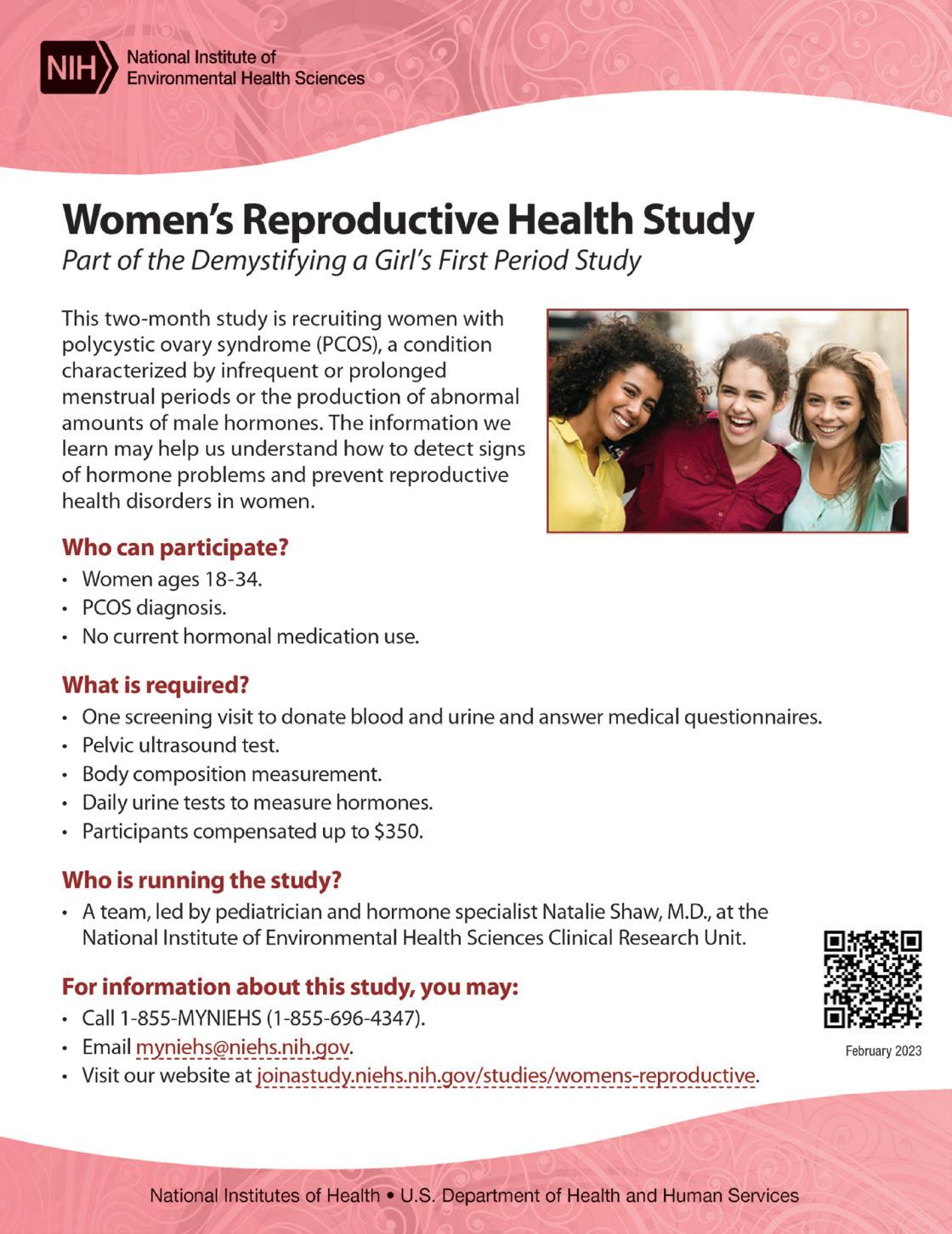

The Ecology
How climate change will impact North Carolina and the Triangle
 BY THOMASI MCDONALD tmcdonald@indyweek.com
BY THOMASI MCDONALD tmcdonald@indyweek.com
The dismal reality of more destructive flooding, wildfires, tornados, and hurricanes, along with melting glaciers, the extinction of plant and animal species, and limited water supplies across the globe, has been well documented.
It’s Earth Day week.
Maybe it’s time to ponder what climate change’s impact has been here in the Triangle?
How bad is it?
The INDY spoke with several climate change scholars at NC State, NC Central, and Duke Universities to better understand—with a nod to Marvin Gaye, the first person I ever heard mention ecology—what’s going on here in the Bull City and beyond.
The academicians offered up a mix of history, marginalization and access to resources, the impact of population growth and development that degrades wildlife zones, the deadly threat of increasing temperatures, and the arrival of invasive plant species.
But they also pointed to hope by way of activism and solutions via science, along with collaborative agreements and partnerships, all augmented by practical, commonsense habits we can all practice toward achieving the goal of preventing this planet from becoming an intermediary chamber of hell.
Ashley Ward is senior policy associate with Duke University’s Nicholas Institute for Energy, Environment, and Sustainability. Her area of expertise is climate health resilience, with a focus on extreme heat.
“Heat kills more people than any other weather-related event for the last 30 years,” Ward tells the INDY. “More than twice as many as floods, and more than hurricanes, tornadoes, and lightning strikes combined. This is how severe it is. And it’s 100 percent preventable.”
Ward, along with the other scholars who spoke with the INDY, says while the climate crisis affects everyone, marginalized communities with limited resources are disproportionately affected.
She points to the impact extreme heat has on residents who live in historically underfunded communities in the Triangle, including “public housing” and “certain neighborhoods” where people are more vulnerable to heat, particularly if they have underlying chronic medical conditions like high blood pressure or diabetes
“It’s called ‘energy poverty,’” Ward says. “It’s not sufficient to say there’s air conditioning in the house if you can’t afford to run it. Some people are having to make the difficult decision of buying their medicine and not running their air conditioner. It’s not just ‘Do you have air conditioning?’
It’s also ‘Can you afford to run it?’”
Ward also points to workplace risks posed by extreme heat, and added that the threat is not only for people who work outside.
“It’s not just folks working in cucumber fields,” she says. “It’s all of us.”
Ward explains that in parts of eastern North Carolina, there have been reports of employee workplaces
where temperatures reach up to 90 degrees. When the workday ends, those employees return to homes without air conditioning during nights that now experience higher temperatures.
“The body doesn’t have a chance to recover [from the heat] and starts the next workday at a deficit. Predictably, hospital emergency room visits spike in the middle of the week,” she says. “It’s not just how hot it is in this area, but also the persistently high temperatures at night that factor in to create the perfect storm that’s happening …. The body just can’t recover.”
John J. Bang is a professor of environmental, earth, and geospatial sciences at NC Central University. Part of his research includes assessing communities’ exposure to air and water pollutants from a health disparities perspective.
Bang tells the INDY that it’s obvious that climate change will have a greater impact on people with fewer resources.
“Historically, it’s always been that way when you look at this country,” says Bang, who adds that this is the case both here in America and globally.
Bang says that here in the Triangle, the big concerns with climate change are food deserts, along with water and air quality.
The NCCU professor points to a fast-growing population and overdevelopment with the consequence of cutting down trees to make room for more buildings. There’s also an increase in transportation and fossil fuel emissions that affects air quality.
“Before overdevelopment, water quality was going down,” says Bang, who points to the increased use of water for construction as well as to meet the needs of a growing population.
Bang explains that with increased usage by a growing population, prices go up, and marginalized communities are disproportionately impacted economically and medically.
“The Research Triangle Park is one of the fastest growing regions in the country,” he says. “If you are part of a [community] with a low socioeconomic status—it’s not hard to predict more burdens for that group.”
Bang says historically people with more resources are able to cope with the stresses coming up. For example, they may use a water filtration system on their faucet and are less likely to be affected by climate change and all other stresses.
But Bang emphasizes that regardless of your status, we all need to use tap water on some level, for showers and cooking, and we all breathe the same air.
Meanwhile, Kofi Boone, a professor of landscape architecture at NC State University, offers a historical perspective on why Black Americans and other people of color are disproportionately affected by climate change in the Triangle, the southeastern part of the United States and across the globe.
Boone says the region is experiencing unprecedented flooding from rainstorms and hurricanes. Soon after Hurricane Matthew devastated eastern North Carolina in 2016, Boone was among a cadre of researchers who participated in a statewide program to assist counties in the state that were wrecked by Matthew.
He points to Princeville, the first all-Black town in North Carolina, founded by formerly enslaved people in 1865.
Boone says the town is prone to flooding because it was built on a floodplain that serves as an escape valve for waters from the Tar River until it recedes.
Boone says that the development of a great many early African American communities were relegated to the least desirable low-lying areas. But he also points to another reason why the settlers of Princeville, in 1865, chose to build the town on a floodplain.
“It was built out of necessity close to the Union army [after the Civil War] to feel safe,” Boone explains.
Boone adds that this phenomenon has occurred across the southeastern United States, and scholars have coined a term, “racialized topography,” to describe it.
Boone points to communities in southeast Raleigh that mirror the flooding in Princeville. Biltmore Hills and Rochester Heights were built along the Walnut Creek watershed. The neighborhoods were the first subdivisions in Raleigh built on Black-owned land beginning in the late 1950s.
The NC State professor says the southeast Raleigh neighborhoods and Princeville share a similar story.
“They have the same history, the same hardships,” Boone says. “The land was bought during Reconstruction. They built the community, and now natural disasters lead to questions about how to fix it. How to conserve it.”
Boone offers a different perspective on the population growth and development across the Triangle: the threat to wildlife zones where indigenous plants thrive and animals breed and build their nests.
Boone points to the Ellerbe Creek in North Durham that stretches from Bragtown to Jordan Lake, which flows
into the Neuse River before going into the Atlantic Ocean. The schools, businesses, farms, and homes that are built along the Ellerbe Creek watershed may be good for people, Boone says, but harm the environment “where plants and species need to survive.”
“There are a bunch of tadpoles in Ellerbe Creek, but the zones where they live are getting smaller and smaller,” Boone says. “There’s the realization that animals move where they’re supposed to go. An example is all the fish, birds, and amphibians that move along the creek for food, to build their nests and hunt.”
Boone says more concerted effort to conserve the wildlife zone would bolster the chances of survival of the great blue heron, a large wading bird that is the symbol of the Ellerbe Creek Watershed Association. Boone says Ellerbe Creek is one of the few places in the United States where those “birds breed, build their nests, and have their babies.”
“It’s really special,” Boone adds.
County, California are making that region drought-resilient by relying on a process that includes microfiltration and reverse osmosis to transform wastewater into drinking water.
Bang, with NCCU, says nanotechnology is being used to remove pollutants from our water and air, and Ward, with Duke, points to the need for North Carolina to adopt the national cooling standard some states already have in use.
“There are heating standards, but we do not have cooling standards in North Carolina,” Ward says.
Here in the Triangle, Boone points to a group of activists in southeast Raleigh working to address flooding in the Biltmore Hills and Rochester Heights neighborhoods, where streets are named after famous African Americans. The community’s activism was ignited by Hurricane Floyd in 1999, when Walnut Creek flooded and devastated the historic neighborhoods. What followed was the creation of the Walnut Creek Wetland Center, which educates its visitors about “the importance of wetlands for clean water, habitat, and recreation while emphasizing the importance of human interaction with nature,” according to its website.
Along with technology, activism, and education, the scholars say that all of us can take commonsense actions that will contribute to the future well-being of a planet bedeviled by frequent, often deadly weather disasters and other climate-out-of-order stresses.
“Take cool showers after work,” Ward says. “Or immerse your feet in a cool tub of water.”
Place a wet cheesecloth on your fan at night to cool the air if you don’t have an air conditioner, she adds.
Bang says to take shorter showers. Recycle. Plant trees. The NCCU scholar says he’s gotten into the habit of giving trees away.
“I started about six years ago,” he says.
“Conservation is something we can all do, or something we can not all do,” Bang says. “To not do … is a terrible mistake.”
At the beginning, middle, and end of life on Earth, climate change affects us all. A tornado bearing down on a farmhouse, the sun’s extreme heat causing a high school athlete to die from heat exhaustion, or a raging wildfire consuming your home does not consider race, class, ethnicity, religion, education, or political affiliation.
All three scholars say the challenge for Triangle residents and beyond is seeing the big picture.
Boone says the warming temperatures are also causing another phenomenon: plants that grow farther south in South Carolina and Georgia are now appearing in North Carolina.
“They’re creeping up and pushing out the natural plant species that can’t take the heat,” he says.
Boone says the top three climate crisis threats in the Triangle are access to quality drinking water; the loss of natural habitats due to destruction caused by human development, storms, and drought; and public health and the treatment of diseases that are expected to move south.
“Those are the big ones we have to worry about,” he says. “That, and Black people and other marginalized groups already at high risk who are last in line to get resources to protect our communities.”
Still, in the face of such a dire situation, the climate crisis forecast is not all gloom and doom.
Science and technology are trying to meet the challenge of addressing climate change. Engineers in Orange
“People are busy living their everyday lives and they can’t see it on a global scale,” Bang says. “‘Climate change is something happening in other places.’ When people understand, it will make a big difference in how they live and how they drive.”
Ward agrees and encourages more urban tree planting to cool temperatures, but she says the federal government has a decisive role in mitigating the adverse effects of extreme heat.
The difference, she says, will determine when children can play outside and the health impact on patrons at bus stops and pedestrians.
“When we have livable communities with clean air and a cool environment, people in those neighborhoods will have better individual health outcomes and well-being,” she says.
“People have to see themselves as part of the world, and invest in its stewardship,” Boone says. “Explore making a good start in your own community,” he adds.
“We’re trying to inspire people.” W
“Conservation is something we can all do, or something we can not all do. To not do … is a terrible mistake.”
Trash Talk
Why are people suddenly critical of recycling?
BY JASMINE GALLUP jgallup@indyweek.comConspiracy theories are for right-wing nuts and doomsday preppers—or so I thought. But a few months ago, I started hearing whispers among my liberal family and friends. Recycling, they alleged, was a myth. It wasn’t really happening, or it wasn’t really doing any good, according to rumors. A lot of people I knew (a surprising number) speculated that Raleigh was collecting plastic bottles, aluminum cans, and cardboard, only to throw them in a landfill.
“[Items in Raleigh] are restricted, because nothing else is getting recycled,” alleged one Reddit user. “And even those really aren’t in the U.S. Plastic recycling is a myth.”
Comments piled up on this post. Most “recyclable” plastics are burned or dumped in the ocean, Raleigh residents said. We used to ship them to China but can’t anymore, they added. Plastic recycling is “a lie from the plastics industry.”
“I wish more people knew this,” wrote another Raleighite. “To be fair, I only learned about ‘wishcycling’ recently. Those recycle symbols they print on plastics don’t mean much. It’s like companies that put ‘green’ or ‘eco’ in their name. Maybe they are, maybe they’re not.”
This is a conspiracy theory that’s been circulating in the United States for years, and it’s rooted in real facts. As of 2018, only about 8.7 percent of the 35.7 million tons of plastic generated by the United States was recycled, according to the U.S. Environmental Protection Agency (EPA).
In the past few years, news outlets looking into this phenomenon have reported that not only is plastic exorbitantly expensive to recycle, but it can also be reused only once or twice before degrading. With little demand for used plastic products in the global recycling market, most plastic products are incinerated or tossed in landfills (32.6 million tons in 2018, according to the EPA).
The plastic recycling industry was put under additional pressure in 2018 when China—which had been buying more than half of the world’s used plastic—raised its standards for plastic products and stopped accepting most items.
Suddenly, cities like Raleigh were scrambling to find a buyer for used plastic, only to find that no one wanted it. Cities and towns were forced to cough up thousands or millions of dollars to continue local recycling programs. In
Raleigh’s blue recycling bins
many cases, the additional cost was passed on to residents in the form of higher monthly fees.
Raleigh managed to avoid raising monthly recycling fees in 2019 by covering the additional $1.5 million cost of its recycling program with money from the general fund. But recycling still costs more today than it did back then. In 2019, Raleigh’s monthly recycling fee was $2.60 per month. In 2023, it’s $4.60 per month.

Today, some people feel betrayed by recycling. They were told—in many cases by the multimillion-dollar companies that were producing the most plastic—that it was an all-purpose balm for the environment. Worried about global warming? Don’t worry, just recycle. In recent years, however, it’s become apparent that recycling is a very specific, limited process that has been hampered by a shrinking global market.
“I think [recycling] certain things, like aluminum cans, [is helpful],” says Samantha Thimsen, who was out with her family last week at a North Raleigh park. “I’m like, ‘OK, this is actually being used for something.’ But certain things, I’m like, ‘I don’t really know.’ I just try not to buy things that are plastic to begin with.”
Is it worth it to recycle?
Thimsen’s take is an accurate one. In the world of recycling, plastics are one of the least valuable materials. In North Carolina, PET plastic (the kind found in disposable water bottles and peanut butter jars) sells for about 14¢ per pound. Colored HDPE plastic (the kind found in milk jugs, shampoo bottles, and juice cartons) sells for about 13¢ per pound. Other plastics, like PP plastics (found in bot-
tle caps and yogurt containers), are essentially worthless.
Aluminum, on the other hand, is worth its weight in U.S. dollars. Loose aluminum cans sell for about 79¢ per pound. Other material, like clear glass (2¢ per pound), office paper (11¢ per pound), and steel cans (8¢ per pound) are less in demand but can be recycled more times than plastic.
“There’s often a perception that, ‘OK, something is metal, I can recycle it,’” says Maine Johnson, spokesperson for Raleigh’s Solid Waste Services Department. “But [people don’t understand] that a lot of things are based on the marketability and the demand for that item.”
Ultimately, recycling is a mixed bag, especially when it comes to plastic. Only a few types of plastic are really recyclable, primarily PET and HDPE. Other, single-use plastics—like to-go utensils, straws, cups, and styrofoam takeout containers—can’t be processed by recycling plants, according to Melody Foote, a spokesperson for the NC Department of Environmental Quality (NC DEQ).
But even though recycling plastic is inefficient, it’s not pointless. North Carolina has a high demand for PET, HDPE, and PP plastics, says Foote. There are at least four local companies that use these products, including Clear Path Recycling (which recycles PET plastic), Unifi Manufacturing (which turns PET plastic into yarn), Polywood (which turns HDPE plastic into furniture), and Envision Plastics (which recycles HDPE and PP plastic).
Plastic bags, films, and wraps—which are typically not recyclable—are also in demand by two nearby companies, Foote says. These items shouldn’t go in your recycling bin but can be turned in for reuse at grocery stores, where they may be sent to Fiberon (in North Carolina) or Trex (in Virginia) to be turned into plastic lumber and outdoor furniture.
Ultimately, about 80 percent of what you put in your recycling bin will be reused at least once, according to local processing plant Sonoco. The other 20 percent, usually consisting of nonrecyclable items like clothing or batteries, ends up in the landfill.
The good news is that of those recyclables, the majority stays in the southeastern United States (as opposed to being shipped overseas), says Foote. In 2020, about 34 percent of recyclables went to companies in North Carolina, 22 percent to South Carolina, 24 percent to other southeastern states, and 7 percent to other states across the country. Only about 13 percent of recyclables that year were exported to companies outside the United States, according to Foote.
So, is recycling worth it? That’s up to you.
Tracey Hinton, a North Raleigh nurse, remains frustrated with the process, she says.
“I recycle everything I can, but it seems like a drop in the bucket,” Hinton wrote in an email to the INDY. “There was so much waste at the hospital. Every patient gets their meds and drinks in a plastic cup and they all go in the garbage every time.”
With all that waste, Hinton remains skeptical of recycling.
“I’ve taken things to the dump that should have gone in the [recycling bin],” she says. “I wonder what really happens to all the things I put in my container.”

Still, some people argue that recycling some materials is better than not recycling at all.
“Recycling does slow down the negative effects of waste that accumulate in our landfills,” says Johnson. “Being conscious of how you recycle is going to be much better than discarding everything in the trash can.”
But at the same time, recycling is only one small piece of the environmental puzzle. Reducing the amount of waste you produce and reusing what you can are two other major components of caring for the Earth. Thimsen, the woman who tries not to buy plastic goods, has the right idea—but she thinks about recycling more than most.
Other neighbors I spoke with last week didn’t seem to give much thought to recycling, beyond simply doing it when it was convenient. My family and friends regularly use their recycling bins (sometimes to the point of filling them up), but don’t usually consider taking other steps to reduce landfill waste.
The bottom line is that saving our natural environment requires some inconvenience. It might be easier to drive 10 blocks to a friend’s house, but cycling doesn’t release greenhouse gases. It’s simpler to shop online, but shopping in-store doesn’t result in tons of nonrecyclable packaging. And it’s convenient to put groceries in plastic bags, but reusable totes don’t end up in landfills.
“We know for a fact that the less items that go into the landfill, the better the outcome is for everyone,” says Johnson. “[But] if you view our environment as a valuable commodity, [people] should consider how they not only dispose of items, but how they purchase items, the reusable factor.”
“I think for the most part, everybody wants to be a good steward of the environment,” Johnson added. “Often it’s just a matter of doing a little digging to find out what little things can be done to improve this situation for everybody. It’s not one person’s burden, it’s everyone’s burden, to make sure that we preserve the environment, the community, and the planet.” W

Another year, another round of winners in INDY Week’s much-imitated, never-replicated Best of the Triangle contest, where you tell us who’s the best of the best in our beloved region.
While Best of the Triangle has been running for two decades now, astute readers and INDY fans will notice that we’re doing things a little differently from now on. Instead of presenting all winners in all categories, ranging from restaurants, bars, and yoga studios to hair salons, museums, and preschools, all at once, we’re running individual contests and presenting winners in different categories one county at a time—Wake, Durham, and Orange— starting with Wake.
At the end of the year, a contest will be held pitting the best of each region against each other for the “Best of the Triangle” crown. There are a handful of additional categories that only apply to the entire Triangle. We’ll honor all Best of the Triangle winners in hundreds of different categories in a special issue in early December.
This year’s list of Wake winners, as voted by our readers, really does look like a best-of-thebest list of businesses and service providers in Wake. You could make a perfect local day— or several—out of dining at the restaurants, touring the wonderful parks and museums, and shopping at all the stores for which our readers cast their ballots. As for service providers— your lawyers, bartenders, chiropractors, and dog walkers—our readers really have chosen the best in the business.
Thank you for nominating and voting for all of your favorites! Congratulations to all of the finalists in Wake, who will receive our coveted star decal to display in their windows. Winners will also receive a poster to display in their shop. Look forward to our Durham and Orange County winners in future papers, and we’ll look forward to celebrating all of our winners in our special edition paper in December.
Businesses Best
Best Attorney
Cara Gibbons
Runners-up: Danielle Varno, Doyle Law Group
Best Auto Dealer
Johnson Lexus of Raleigh
Runners-up: Hendricks Toyota Apex, Sir Walter Chevrolet
Best Auto Mechanic
Joe at Precision Auto Works
Runners-up: Duty Tire, Car Fix
Best Bridal Store/Boutique
Gilded Bridal
Runners-up: Simply Blush, Vow’d

Best CBD/Head Shop
Aloha Plus Cannabinoids
Runners-up: Nature’s Releaf, Trek CBD
Best Clothing Consignment
Dorcas Ministries
Runners-up: Revolver Consignment Boutique, MODE
Best Dance Studio
CC & Co. Dance Complex
Runners-up: Cary Ballet Conservatory, Tutu School Raleigh
Best Dog Boarding
Suite Paws
Runners-up: The K9 Kabana, PetSound Daycare and Boarding
Best Dog Grooming
Woofgang Bakery & Grooming
Runners-up: Harmony, Petsound Daycare and Boarding
Best Dog Training
Sit Means Sit
Runners-up: Haven Dog Training, Courtney with PetSmart at Timber Ave, Garner
Best Dog Walking Pack and Pride
Runners-up: aMANda’s BEST FRIEND, Happy Puppers
Best Electrician
Chris Lee Electric
Runners-up: Raleigh Electric Company, Clear Choice Electric
Best HVAC Company
Wake Heating and Air
Runners-up: Nguyen Services LLC, Hollister HVAC
Best Insurance Company NC Farm Bureau
Insurance
Runners-up: Amanda Hagood at State Farm, Snotherly Insurance Agency
Best Jeweler/Jewelry Store
Bailey’s Fine Jewelry
Runners-up: Diamonds Direct, Traditional Jewelers
Best Landscaper
Triangle Environmental
Runners-up: Landvision Designs, FortSmith Landscaping
Best Local Bookstore
Quail Ridge Books
Runners-up: Nice Price Books & Records, So & So Books
Best New Business
Longleaf Swine
Runners-up: Sweet T Picnics, Epic Hot Tubs & Swim Spas

Best Painters
Anderson Painting
Runners-up: CLH Painting, Isti Remodeling
Best Place to Buy
Locally Made Art

Artspace
Runners-up: DECO Raleigh, The Pocket Gallery
Best Real Estate Company
Raleigh Realty

Runners-up: DuBois Property Group, Wolgin Real Estate Group
Best Realtor
Autumn DuBois
Runners-up: Mike Wolgin, Brandon Duncan
Best Vintage Store
Father & Son Antiques
Runners-up: Raleigh Furniture Gallery, TrunkShow

Arts Best
Best Art Gallery
Artspace
Runners-up: The Pocket Gallery, Gallery C
Best Art Museum
North Carolina Museum of Art
Runners-up: The Gregg Museum of Art & Design, CAM

Best Comedy Club/Event
Goodnights Comedy Club
Runners-up: ComedyWorx, King’s Barcade
Best Drag Show/Event
Ruby Deluxe Drag Brunch
Runners-up: Drag Queen Story Hour, GAG! Raleigh
Best Electronic Concert Venue
Red Hat Amphitheater
Runners-up: The Ritz, Koka Booth Amphitheatre
Best Film Theatre Venue/ Event
Alamo Drafthouse
Runners-up: Theatre in the Park, The Cary Theatre
Best Local/Regional Podcast
North Carolina Food & Beverage Podcast
Runners-up: NCPR, Beltline to Broadway
Best Radio Station
WUNC-FM
Runners-up: WKNC 88.1, 95.7 FM That Station
Best Science/History Museum
NC Museum of Natural Sciences
Runners-up: NC Museum of History, Marbles Kids Museum

Best Theatre Company
Raleigh Little Theater
Runners-up: Burning Coal Theatre Company, NRACT (North Raleigh Arts & Creative Theatre)
Best Unplugged Concert Venue
The Pour House
Runners-up: AJ Fletcher Theater (Pinecone), Transfer Co.
Best Alcoholic Cocktails
Bittersweet
Runners-up: Dram & Draught, SideBar
Best Bagel
Benchwarmers Bagels
Runners-up: NY Bagel & Deli, The Morning Times
Best Bakery
La Farm
Runners-up: Boulted Bread, Bailey Lane Baking Co.
Best Barbecue (tie)

Longleaf Swine
The Pit
Runner-up: Sam Jones BBQ
Best Beer Retail Store
State of Beer
Runners-up: Tasty Beverage Company, Bottle Rev 3
Best Biscuits
Rise
Runners-up: The Flying Biscuit, Bojangles
Best Brewery
Trophy Brewing
Runners-up: Altered State Brewing Co., Oaklyn Springs Brewery
Best Brunch Restaurant
Hummingbird
Runners-up: Flying Biscuit, First Watch
Best Burger
MoJoe’s
Runners-up: Bad Daddy’s, Mama Crow’s
Best Catering
Catering Works
Runners-up: Donovan’s Dish, Empire Eats Catering
Best Cheap Eats
Cook Out
Runners-up: Char-Grill, MoJoe’s
Best Cheese Shop
Wegmans
Runners-up: Raleigh Cheesy, Whole Foods
Best Chinese Restaurant
Five Star Restaurant
Runners-up: Red Dragon, Beansprout
Best Coffee Shop
Sola
Runners-up: Cup A Joe, Jubala
Best Desserts
Hayes Barton Cafe
Runners-up: Lucette Grace, Bittersweet
Best Draft Selection
Raleigh Beer Garden
Runners-up: Tasty Beverage Company, Vault Craft Beer
Best Ethnic Grocery Store
H Mart
Runners-up: Grand Asia Market, El Toro Supermarket
Best Food Truck
Gym Tacos
Runners-up: Empire Eats Food Truck, Berto’s Chimis
Best Indian Restaurant
Cheeni’s
Runners-up: Kebab and Curry, Himalayan Range Nepali Restaurant
Best Italian Restaurant
Bella Monica
Runners-up: Gravy, Casa Carbone
Best Japanese Restaurant
Waraji
Runners-up: Sushi Mon, Sushi Suyu
Best Late Night MealPast 10 p.m.
Cook Out
Runners-up: Players Retreat, Raleigh Times Bar
Best Mexican Restaurant
Dos Taquitos
Runners-up: Gym Tacos, Taqueria El Toro
Best Neighborhood Bar
Players Retreat

Runners-up: My Way Tavern, Landmark Tavern
Best New Restaurant
Longleaf Swine
Runners-up: Cheeni’s, Sushi Suyu
Best Non-Acloholic Drinks



Sitti

Runners-up: Killjoy, Sodabox
Best Pizza
Oakwood Pizza Box
Runners-up: Lilly’s Pizza, DeMos Pizza and Deli
Best Seafood
42nd Street Oyster Bar
Runners-up: Cortez Seafood and Cocktail, Cape Fear Seafood
A Place at the Table provides community and good food for all regardless of means. We are serving everyone. We believe that all people deserve dignity to eat in a restaurant and have a healthy, affordable meal. Wherever you may come from, you are welcome to dine with us. We hope you will.


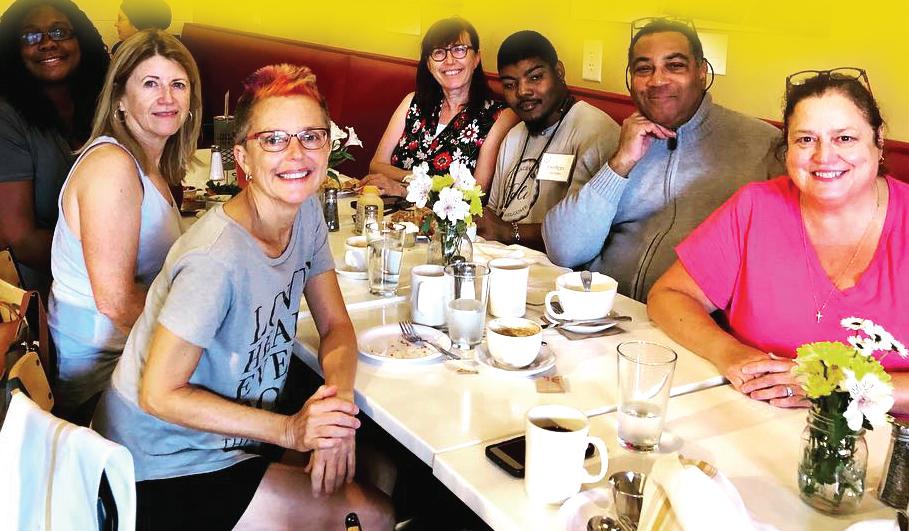
Best Small Plates/Tapas
Barcelona
Runners-up: Humble Pie, Vinos Finos Tapas and Wine Bar
Best Southern Food

Beasley’s
Runners-up: Sam Jones BBQ, The Pit
Best Sushi
M Sushi
Runners-up: Sushi Blues, City Market Sushi
Best Thai Restaurant
Lemongrass Thai
Runners-up: Sushi Thai, Thaiphoon
Best
Vegetarian Eatery
Irregardless

Runners-up: Fiction Kitchen, Sitti
Best Wine List
Angus Barn
Runners-up: Vinos Finos Tapas and Wine Bar, Peak of the Vine
Best Wine Retail Store
The Raleigh Wine Shop
Runners-up: Wine Authorities, WineFeed
Best Wings
My Way Tavern
Runners-up: Wings Over Raleigh, The Pit
Best Barber Shop
Arrow
Runners-up: South Hills Barber Shop, Just Men’s Haircuts
Best Childcare
Schoolhouse of Wonder
Runners-up: Children’s Discovery Center, Country Sunshine Children’s Center

Best Chiropractic Practice
Oak City Chiropractic
Runners-up: Triangle Chiropractic and Rehabilitation Center, Abundant Life Chiropractic of Apex
Best Dental Practice
Signature Smiles
Runners-up: Village Dental, Bernstein Orthodontics
Best Dermatological Practice
Blue Ridge Dermatology
Runners-up: Southern Dermatology, Clara Dermatology
Best Gym
Oak and Iron Fitness
Runners-up: AKtivate Fitness, Renu Health and Fitness
Best Hair Salon (tie)
Lux Salon
Moss
Runner-up: Little Shop of Hairdos NC

Best Holistic Medicine
Renovo Natural Health
Runners-up: Aloha Plus CBD, Awakenings Health
Best Massage Therapist
Awakenings Health
Runners-up: Kneaded Massage, Towel and Table Massage
Best Pediatric Practice
Oberlin Road Pediatrics
Runners-up: Carolina Kids Pediatrics, Pediatric Partners
Best Spa
Blue Water Spa
Runners-up: Avail Aesthetics, Colette Skincare
Best Veterinary Practice
Bayleaf Veterinary
Runners-up: Shiloh Animal Hospital, Armadale Animal Hospital
Best Women’s Health Practice
Kamm McKenzie OBGYN
Runners-up: Durham Women’s Clinic, Arbor OBGYN
Best Yoga Studio
Alchemy Hot Yoga
Runners-up: Barre-Up Raleigh, YoBa Studio

Nominate







Places Best
Best Arboretum or Garden
JC Raulston Arboretum
Runners-up: Raleigh Rose Garden, Juniper Level
Best Dance Venue
Legends
Runners-up: Ruby Deluxe, 440 Nightclub
Best Golf Course
North Ridge Country Club
Runners-up: MacGregor Downs CC, Brevofield
Best Hotel
The Umstead
Runners-up: Heights House, Aloft Hillsborough Street
Best Hotel Lounge
The Umstead
Runners-up: Longleaf Hotel Lounge, The Willard
Best Karaoke Place/Event
Flex
Runners-up: The Night Rider, Harryoke
Best Place to People Watch
NCMA Park
Runners-up: Glenwood South, RDU
Best Preschool/Early Education Program


Temple Beth Or Preschool
Runners-up: Edenton St Methodist Early Childhood Program, Triangle Academy Preschool
Best Sports Bar
Players Retreat
Runners-up: Carolina Ale House, Tobacco Road
Best Summer Camp
Temple Beth Or Preschool
Runners-up: Raleigh Little Theatre, Schoolhouse of Wonder
Best Trivia Bar/Event
My Way Tavern Raleigh
Runners-up: Hammered Trivia, Vault Craft Beer

People & Misc. Best

Best Chef
Scott Crawford
Runners-up: Silvano Garcia, Gregory Hamm
Best DJ
Luxe Posh
Runners-up: Alan Domingo, DJ Danielingus
Best Draft-Slinger
Cameron Herbert at Tasty Beverage Company

Runners-up: Ziggy Sprinkle, Chase at Tasty Beverage Company

Best Kids Non-Profit

Note in the Pocket
Runners-up: Skate Raleigh, Hope for Teens
Best Local Activist Group
Livable Raleigh
Runners-up: Oaks and Spokes, Raleigh United Mutual Aid Hub (RUMAH)
Best Mixologist
Mara Sudol
Runners-up: Kyle Hankin at FOUNDATION, Brad at Raleigh Times Bar
Best Non-Profit
Urban Ministries of Wake County
Runners-up: Livable Raleigh, Hope for Teens
Best Politician
Governor Cooper
Runners-up: Jane Harrison, Raleigh City Council, Mary Black, Raleigh City Council

Best Reason to Leave Wake County
Greedy Developers
Runners-up: Cost of Living/Housing, Traffic/Lack of Public Transportation
Best Reason to Love Wake County
All the Trees, Parks and Greenways
Runners-up: All the Things to Do, The People

Best Use of Public Money
Affordable Housing
Runners-up: Parks and Recreation, Public Libraries and Schools

Best-Kept Secret
The Gregg Museum of Art and Design
Runners-up: HER Circle by HER Health Collective, Sweet Ts Picnics
Biggest Waste of Public Money
Incentives for Big Developers
Runners-up: Raleigh Police Department, New Raleigh Municipal Building/New Civic Tower
Worst Politician
Mayor Mary-Ann Baldwin
Runners-up: Mark Robinson, Phil Berger
Motion Pictures
Two new exhibitions at the North Carolina Museum of Art explore Black history and culture through the lens of freedom and the future.
BY ZARI ALYSSA TAYLOR arts@indyweek.comMichael Richards: Are You Down? and Ruth E. Carter: Afrofuturism in Costume Design, the North Carolina Museum of Art’s two spring exhibits, highlight the work of artists using a broad range of mediums to express and define Black history and culture.
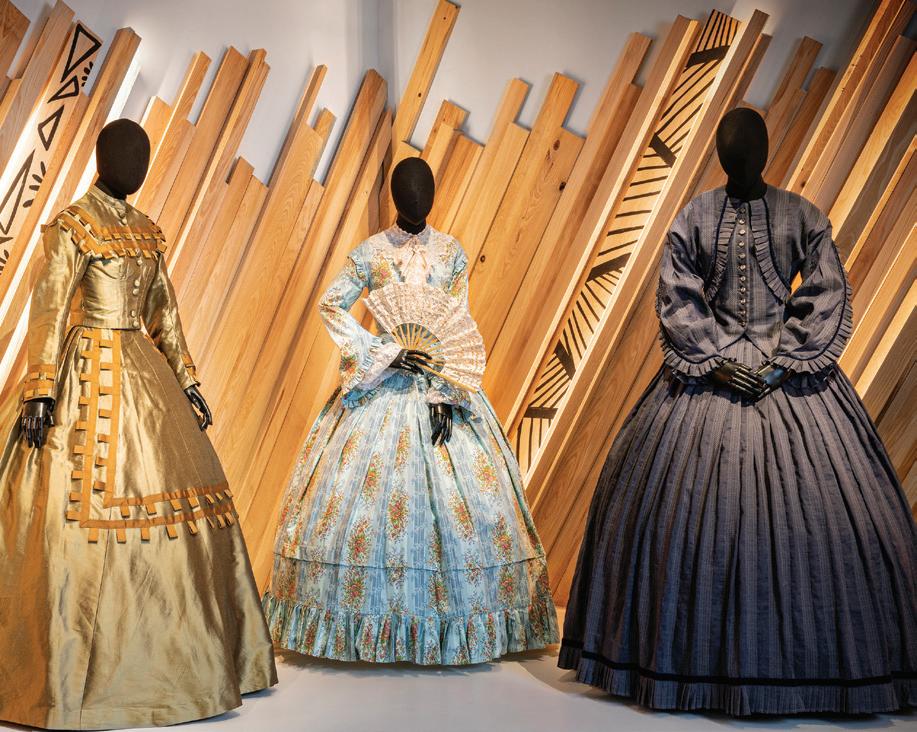

In both, Black storytellers blend history, politics, and art to map a Black past, present, and future.
Regulars of the NCMA will be familiar with the work of Michael Richards, who has had a version of his sculpture “Tar Baby vs. St. Sebastian”—a golden statue of a Black airman pierced with small airplanes—on display at the museum for the past two decades. As they explore this new exhibit, which opened on March 4, viewers will find that other pieces of Richards’s work follow similar themes of Blackness, freedom, and flight. Michael Richards: Are You Down? is the most comprehensive retrospective of
Richards’s work to date. Born in 1963 in New York City, but of Jamaican and Costa Rican descent, his approach to his work was clearly informed by an American and Caribbean context—especially moments of colonial independence and the civil rights movement.
The exhibit tracks how Richards’s art evolves over the course of a decade, exploring how he plays around with drawing, sculpture, and installation. Richards often used himself as a vessel for many of these ideas, casting his body as a stand-in to parse historical figures like the Tuskegee Airmen, issues like racism and police brutality, and an expansive desire for freedom from these oppressions.
Most eerie about Michael Richards: Are You Down?, and the span of its scope, is the extent to which Richards’s work also seems prophetic, bearing relevance to today’s most pressing and polarizing issues around race.
“These issues are still so relevant,” says Linda Dougherty, chief curator of the exhibit and curator of contemporary art at NCMA. “The things he was thinking about and talking about, related to his experience as a Black American man— racism, police brutality, social justice—those things haven’t gone away. Those issues are still here with us today.”
Richards died at the age of 38 on September 11, 2001, while working in his studio on the 92nd floor of Tower 1 of the World Trade Center. This means that he missed living in a world impacted by that event. He missed the election of America’s first Black president. He missed the emergence of the Black Lives Matter movement, which centered on the continued issue of police brutality. He missed the ongoing global pandemic, which has transformed how we live, work, and make art. Despite this, his work still reaches out from the past and speaks to us.
Richards’s work sought to illuminate a past and present of racism and social justice, but he also predicted a future in which these problems would not be resolved. Though his work dances on the line between art and politics, its seamless commingling is what makes the exhibit so powerful.
“It’ll be interesting to me to see who it appeals to,” Dougherty says of the exhibit. “I think we have a core audience that knows his work because we’ve had this one piece here on view for so long. So because of that, they will want to come see it. I think people interested in contemporary sculpture, contemporary art, and art that deals with social, political, and historical issues—the work will speak to those people. And I hope it’s the person that doesn’t come here intending to see it who is drawn into it and discovers something they didn’t know and hopefully shifts their perspective, [making] them look at the world [in] a different way.”
Ruth E. Carter: Afrofuturism in Costume Design, meanwhile—which opened on April 1 and is located in a neighboring wing— continues with the theme, commemorating Black identity and culture through clothing.
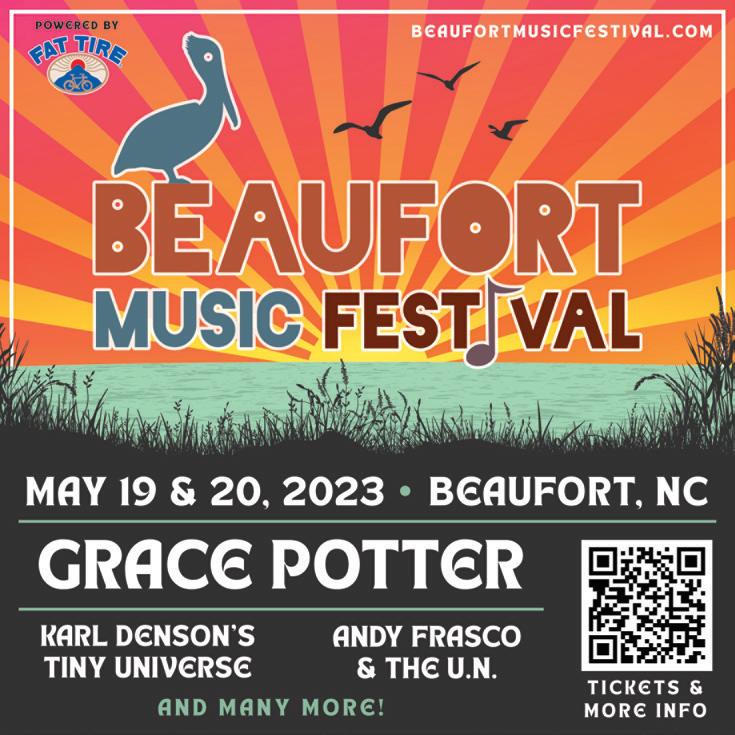
a larger part of culture, beyond the actual artifacts through which costumes circulate.
“It’s super important,” Brooks adds, “especially now, as we see more films dedicated to the Black experience.”


Costume design is an often forgotten cog in the wheel of filmmaking, but how characters look in a film is just as important as the plot, the score, or the directing.
“Think about Do the Right Thing,” Brooks says. “That was groundbreaking not only because of this conversation about police brutality and race relations, but it was groundbreaking in hip-hop because it was one of the first films that displayed hip-hop as a culture and subculture to [Blackness]. So you still see the remnants of that even today in filmmaking, where people are able to get this view [of Black culture]. Some outsiders get the view of Black culture, but for us insiders, we get to see ourselves represented authentically in new ways.”
This kind of storytelling is meticulous and requires a great degree of historical research and creative imagination. Carter’s work on Selma, a film focused on the civil rights movement with a very specific reference point, required a very different kind of
Viewers will know the art of Ruth E. Carter without realizing it, as her résumé as an award-winning costume designer very much precedes her. But thankfully, the exhibit is there to give viewers a refresher, showcasing pieces spanning her 40-year career and selections from her personal archive, as well as the archives of the studios she’s worked with.
Carter’s costume design gives life to characters and stories that encapsulate the Black experience. Most notably, she’s worked with the legendary director Spike Lee and the Black Panther franchise—the latter of which won her two Academy Awards, in 2019 and 2023. Displaying Carter’s work outside of these cinematic contexts marks its importance for filmmaking as well as works of art.
Maya Brooks, assistant curator of contemporary art at the NCMA, emphasizes the importance of costume design as an art form that shapes culture.
“I love that Ruth thinks of her work as ‘wearable art,’” Brooks says. “She’s not a fashion designer in that way, but she is making something wearable that expresses something.”
And this kind of storytelling is crucial as
preparation than that of a film like Black Panther, which draws from clothing traditions of African countries like Kenya and South Africa, with an added technological element embedded in Afrofuturism.
In the exhibit, viewers get an intimate look at Carter’s creative process, including mood boards, sketches, and photographs that inspired the final looks we saw on the big screen. This artistic expression is what Brooks hopes attendees appreciate.
“I hope they walk away with understanding not only more about Ruth as a person, but really as a creative, and also her thinking about culture,” she says. “There’s something to be said here about how forward-thinking [Black] culture is and her influence on that, especially in the Afrofuturism spectrum that exists. It’s science. It’s technology. But it’s also expression. It’s how we dress. It’s how we move. It’s how we talk. It’s everything to do with our culture and the way that people like Ruth are pushing that forward.”
Together, the work of both Michael Richards and Ruth E. Carter is emblematic of the importance of telling stories about race that are authentic, imaginative, and long-lasting. W

“It’s science. It’s technology. But it’s also expression.”
Musician Seeking (Tiny) Desk Job

Over a hundred independent musicians from North Carolina submitted to NPR Music’s Tiny Desk Contest this year—a true amalgam of independent artistry.
BY GRANT HOLUB-MOORMAN music@indyweek.comPhone propped on a shelf, we’re looking over the drummer’s shoulder at lead singer Velencia Giles, flanked by bandmates on both sides. She greets the viewer, both hands up, with a reverb-laden “HI!” The band cracks up. NPR Music’s Tiny Desk Contest is beautiful for its lack of polish. Giles, a Garner singer-songwriter who performs as Lenci, submitted a video for the first time this year. Entry requirements are straightforward: a performance of an original song with a desk featured somewhere in the video. The annual competition is an open call for unsigned artists that offers a single golden ticket to the highest throne of indie music: a performance by a cluttered desk—and exposure on a YouTube channel with 7 million subscribers. This year’s winner will be announced on May 9.
The Tiny Desk bookshelf backdrop is a collage of mugs, stuffed animals, an Emmy, and a “sounds of the rain forest” smoke alarm. Despite the maximalism, Tiny Desk wants the cramped stage to encourage simplicity. Behind this
desk, T-Pain sang without autotune. Mitski played solo, howling into her guitar.
For Giles, the open call merited a shoulder-shrug “sure,” after J’Pierre, her collaborator in Atlanta, urged her to enter with a hodgepodge group of other underground artists. Giles figured it wouldn’t be too much work and it might be a good way to build a network. Beyond exposure, the contest emphasizes a community of independent artists that celebrate and support each other.
Last year’s winner, bilingual singer-songwriter Alisa Amador, wrote on NPR, “I entered every year for five years because it always introduced me to fantastic artists. It reminded me that I actually wasn’t alone.”
Growing up in Garner, Giles found her voice at Lucky Tree, a Raleigh café with open mics and performances in a myriad of genres. The supportive community helped Giles find her own unique country style as a teenager.
“There’s this stigma that country music is a white thing,”
she says. That style flows subtly in her contest entry, “Mistakes of Youth,” with her bandmates carrying an R&B groove that alternately lurches and sways. It’s a blend that just might be the thing to catch the ear of NPR Music producer Bobby Carter, who, in an email interview, gives a shout-out to Charlotte’s Anthony Hamilton before doubling down on his love of Southern music.
“These young musicians are coming to the table with a gumbo of styles and submitting entries that are impossible to classify, and I love it,” he tells INDY Week. “I’ve seen R&B singers over bluegrass and country rhythms.”
For her submission, Giles was joined by pianist J’Pierre, Donn Chii on guitar, Xavier Jones on bass, and Calib Lanier on drums. Despite just a phone handling the audio mix, the group is synchronized through hard breaks and twisting transitions, the instruments weaving into the foreground.
For some musicians, the Tiny Desk Contest is a long-awaited boost. That was the case for the first year’s
winner, Oakland, California’s Fantastic Negrito. The seasoned Black roots artist was striving to return to music after a seven-year hiatus. After winning the award from NPR Music in 2014, he went on to win three album Grammys.
Ronnie and Rosa Russ, who also submitted to the 2023 contest, are now in their third decade of professional music. They perform as Sultry Storm, formerly Duétté. The sisters live in Raleigh and Clemmons, respectively. After years of full-time gigging in New York City, Rosa started a publishing company and moved down to North Carolina in 2001. But she refused to abandon the craft. The entire Russ family is musical—their mother was a touring opera and Broadway performer. So after years of watching the curated Tiny Desk concerts,
to remain different between genres. Underground indie rock, “world music,” and jazz artists often receive an invite, but only well-established country and hip-hop artists seem welcome. Popular working-class or rural genres like norteño, gospel, hardcore, and cumbia have rarely, if ever, made it to the desk.

NPR’s leadership is 62 percent white. The 2023 Tiny Desk Contest, alternately, is judged by four women, four people of color, and two white people. Expanding the curatorial power allows the contest to truly embody its mission of creating an inclusive music community and reaching beyond established industry tastes.
“The Tiny Desk Contest team has beefed up our college and HBCU outreach,” says Carter, describing how the team gets the
the Russ sisters learned about their chance to perform on the cramped stage. They booked it back to New York City to record “I See You” with collaborators Shawn Lucas, Dave Innis, Eric Brown, and Sly Scott. The song is an uplifting acknowledgment of struggle and survival.
“A lot of people don’t get accolades for everyday living and just doing what you got to do to survive,” Rosa says. “I just think people need to hear that we see you, we appreciate you.”
That invitational love is present in Sultry Storm’s lyrics, originally written in 2012, and in the block-party dance moves that the pair break out during the entry video. As the lead singer, Rosa glides easily between delightful jazz trills and pointed soul melodies. Ronnie coolly harmonizes before launching into rap verses.
Resting on classic rhythms from the early New York City hip-hop scene, Ronnie questions the people who allow the struggle to become them: “Why you gotta be? You versus this economy …. Got you on your knees, is that a prophecy? Not from me.”
Before the contest was launched, Tiny Desk’s curated concerts kicked off in 2008. The first four featured artists were all white singer-songwriters. Over the years, Megan Thee Stallion, BTS, and Chris Stapleton made it on. But standards appear
word out to artists. “We’ve also been more active on Instagram and TikTok. Happy to say that we’ve seen a significant increase in entries this year.”
Relying on her experiences as an independent musician and Black woman entering the music industry, Giles offers her two cents about breaking into a creative career.
“One, being intentional about helping others, figuring out what supports them,” she says. “Also being aware of your own privilege, and how to expand and share that privilege and give resources to others, is something that I really want to do. And, in particular, with communities of color, knowledge really is power.”
“There’s a hunger when you listen to North Carolina artists, because we’re always the underdog,” Giles states plainly. “We have something to prove.”
Rosa Russ loves watching other entries pour into the contest, and plans “to reach out and collaborate with other people. That just stretches you and just opens you up to different things.”
Now in its seventh year, the Tiny Desk Contest is expanding the contest model, spotlighting “Top Shelf” entries in addition to the sole winner.
“If this contest gets a musician one step closer to making music for a living,” Carter says, “that’s a huge win.” W

“These young musicians are coming to the table with a gumbo of styles and submitting entries that are impossible to classify, and I love it.”
Terry Virts: How To Astronaut: An Insider’s Guide to Leaving Planet Earth Wed, Apr. 19, 5:30 p.m. Flyleaf Books, Chapel Hill.
Frances Mayes and Susan Wyler: Pasta Veloce: Irresistibly Fast Recipes from Under the Tuscan
Sun Thurs, Apr. 20, 5:30 p.m. Flyleaf Books, Chapel Hill.
music
Al Strong Presents: Jazz on the Roof
Wed, Apr. 19, 7 p.m. The Durham Hotel, Durham.
Black Belt Eagle Scout $15. Wed, Apr. 19, 8 p.m. The Pinhook, Durham.
Elora Dash $10. Wed, Apr. 19, 8 p.m. Cat’s Cradle Back Room, Carrboro.
Rare Music Series: Keiran Campbell (Baroque Cello) and Sezi Seskir (Fortepiano) Wed, Apr. 19, 7:30 p.m. Nelson Music Room, Durham.
Timmy’s Organism / Bonies Wed, Apr. 19, 8 p.m. Rubies on Five Points, Durham.
47 Eyez on Me & Late Notice
Present: Above the Clouds $7. Thurs, Apr. 20, 8 p.m. Cat’s Cradle, Carrboro.
420 Half Nelson: Willie Nelson 90th Bday Bash $10. Thurs, Apr. 20, 8 p.m. Rubies on Five Points, Durham.
Big Bad Voodoo Daddy $37+. Thurs, Apr. 20, 8 p.m. The Carolina Theatre, Durham.
Ethan Iverson Trio $30. Thurs, Apr. 20, 8 p.m. Sharp Nine Gallery, Durham.
Housing for New Hope’s Rent Party $18+. Thurs, Apr. 20, 8 p.m. The Fruit, Durham.
Live Jazz with Marc Puricelli and Friends Thurs, Apr. 20, 7 p.m. Imbibe, Chapel Hill.
Sam Burchfield and the Scoundrels $15. Thurs, Apr. 20, 8 p.m. Cat’s Cradle Back Room, Carrboro.
Steve CormierThurs, Apr. 20, 7 p.m. The Kraken, Chapel Hill.
Pretty Crimes / Jessie Dunks $15.
Thurs, Apr. 20, 8 p.m. The Fruit, Durham.
The Dip $24. Fri, Apr. 21, 8 p.m. Cat’s Cradle, Carrboro.
Eggy Strange / Drozy / Drew Shamir $10. Fri, Apr. 21, 7:30 p.m. Rubies on Five Points, Durham.
Lil Wayne: Welcome to Tha Carter Tour $342+. Fri, Apr. 21, 7 p.m. The Ritz, Raleigh.
Marvelous Music Mainstage Series: Croce Plays Croce $27. Fri, Apr. 21, 7:30 p.m. Cary Arts Center, Cary.
Medium Heat / Megayacht Fri, Apr. 21, 8 p.m. The Berkeley Cafe, Raleigh.
The Old Ceremony $12. Fri, Apr. 21, 8 p.m. Cat’s Cradle Back Room, Carrboro.
The Old Friends Acoustic Tour Starring Ben Rector $49+. Fri, Apr. 21, 8 p.m. DPAC, Durham.
The Sadies $22. Fri, Apr. 21, 8 p.m. Motorco Music Hall, Durham.

UNC Faculty Jazz with Special Guest Marcus Finnie $25. Fri, Apr. 21, 8 p.m. Sharp Nine Gallery, Durham.
Brevan Hampden Group: Tito Puente Tribute $20+. Sat, Apr. 22, 8 p.m. Sharp Nine Gallery, Durham.
Bullhorn Durham Tour: DUNUMS and Quran Karriem Sat, Apr. 22, 7:30 p.m. Duke Coffeehouse, Durham.
Devon Gilfillian $20. Sat, Apr. 22, 8 p.m. Cat’s Cradle Back Room, Carrboro.
Fortune Factory Presents: European Vacation $5. Sat, Apr. 22, 10 p.m. Rubies on Five Points, Durham.
Home Brewed: A CNOTE Event Sat, Apr. 22, 4 p.m. Durty Bull Brewing Company, Durham.
House of Black Dance Party $10. Sat, Apr. 22, 10 p.m. The Pinhook, Durham.
Laney Jones $12. Sat, Apr. 22, 7 p.m. The Pinhook, Durham.
Rhonda Robichaux: Blues, Soul, Funk, and Jazz Sat, Apr. 22, 7 p.m. Succotash Durham, Durham.
The Ethics of Now with Kim TallBear Fri, Apr. 21, 7 p.m. Durham Arts Council, Durham.
Kids Storytime— Michael G. Neece: Tony Jenzano, Astronaut Trainer Sat, Apr. 22, 11 a.m. Flyleaf Books, Chapel Hill. Jill Caugherty: The View from Half Dome Tues, Apr. 25, 5:30 p.m. Flyleaf Books, Chapel Hill.
Marsha Gordon: Becoming the Ex-Wife Tues, Apr. 25, 6 p.m. So & So Books, Raleigh.
Shame Gang with Skyzoo, Swank & Draft, MaDrique, Luh Bri, and More $15. Sat, Apr. 22, 7 p.m. Transfer Co. Food Hall, Raleigh.
The Wailin’ Jennys $69+. Sat, Apr. 22, 7:30 p.m. Martin Marietta Center for the Performing Arts, Raleigh.
Acid Dad $15. Sun, Apr. 23, 8 p.m. Cat’s Cradle Back Room, Carrboro.
Durham Symphony Orchestra: Resurgence! A Celebration of New Music at Hayti $30. Sun, Apr. 23, 3 p.m. Hayti Heritage Center, Durham.
The Steel Wheels $15. Sun, Apr. 23, 8 p.m. Motorco Music Hall, Durham.
Duke Chamber Music Program Concerts Apr. 24 and 25, 7 p.m. Baldwin Auditorium, Durham.
Theo Katzman $25. Mon, Apr. 24, 8:30 p.m. Cat’s Cradle, Carrboro. Cryogyser $13. Tues, Apr. 25, 8 p.m. The Pinhook, Durham.
Fruit Bats $25. Tues, Apr. 25, 8 p.m. Cat’s Cradle, Carrboro.
Jeremy “Bean” Clemons Jazz Trio $8. Tues, Apr. 25, 9 p.m. Kingfisher, Durham.
North Carolina
Jazz Repertory Orchestra Concert $25. Tues, Apr. 25, 8 p.m. Sharp Nine Gallery, Durham.
check with local venues for their health and safety protocols.
Embroidered Art by Jennifer Markowitz Apr. 19–May 21, various times. Horace Williams House, Chapel Hill.
artStaff-Guided Tour of True Likeness

Thurs, Apr. 20, 6 p.m. Gregg Museum of Art & Design, Raleigh.
Artist Talk with Caroline Kern Fri, Apr. 21, 7 p.m. Attic 506, Chapel Hill.
Durham Public Schools Art Instructor Showcase Fri, Apr. 21, 6 p.m.
Durham Arts Council, Durham.
Emergence: Photographs by Ashlie Johnson
Coggins Fri, Apr. 21, 6 p.m. Golden Belt Great Hall Gallery, Durham.
Jim McKeon: Third Friday Reception Fri, Apr. 21, 6 p.m. 5 Points Gallery, Durham.
Spring Soul Show Fri, Apr. 21, 5:30 p.m. Ample Arts Unit 123, Durham.
FRANK Gallery Grand Opening Sat, Apr. 22, 5 p.m. FRANK Gallery, Durham.
Connecting Visions Apr. 25–May 21, various times. Hillsborough Gallery of Arts, Hillsborough.
Jersey Boys $32+. Apr. 5-23, various times. Theatre Raleigh, Raleigh.
The Cherry Orchard $30. Apr. 6-23, various times.
Burning Coal Theatre Company, Raleigh.
She Kills Monsters $27. Apr. 13-23, various times. Titmus Theatre, Raleigh.
Bull City Comedy Festival Wed, Apr. 19, 8 p.m. Bull City Ciderworks, Durham.
Fri, Apr. 21, 8 p.m.
The Glass Jug Beer Lab RTP, Durham.
Sun, Apr. 23, 6 p.m. Devine’s Restaurant & Sports Bar, Durham.
David Spade $45+. Thurs, Apr. 20, 8 p.m. DPAC, Durham.
PBS NC’s State of Change: Natural Solutions Screening and Discussion Event
Thurs, Apr. 20, 7 p.m. North Carolina Museum of Natural Sciences, Raleigh.
like to plan ahead?
like to ahead?
Kathleen Madigan: Boxed Wine and Tiny Banjos 2023
Tour $28+. Fri, Apr. 21 and 22, 8 p.m. The Carolina Theatre, Durham.
Duke Opera Theater: Once Upon a Time Fri, Apr. 21, 7 p.m. Baldwin Auditorium, Durham.
The Color Purple $90+. Apr. 22–May 7, various times. Martin Marietta Center for the Performing Arts, Raleigh.
Cary Ballet Company: Charming Coppélia and Contemporary Dance $25+. Sat, Apr. 22, 7 p.m. Cary Arts Center, Cary.
Druski: Coulda, Woulda, Shoulda Tour $43+. Sat, Apr. 22, 8 p.m. DPAC, Durham.
stage screen
The ComedyWorx Show Matinee $9. Sat, Apr. 22, 4 p.m. Comedy Worx, Raleigh.
Luxury Comedy Hootenanny featuring Dr. Brian King Sat, Apr. 22, 8 p.m. Imbibe, Durham.
Sugar on Top Comedy Show Sat, Apr. 22, 7 p.m. Anisette Sweet Shop, Raleigh.
Bill Maher $60+. Sun, Apr. 23, 8 p.m. DPAC, Durham.
The Girl Who Swallowed a Cactus Sun, Apr. 23, 3 p.m. The DeSales Center at Holy Infant Catholic Church, Durham.
The Hunger and Dracula $10. Fri, Apr. 21, 7 p.m. The Carolina Theatre, Durham.
su | do | ku
© Puzzles by Pappocomthis week’s puzzle level:

There is really only one rule to Sudoku: Fill in the game board so that the numbers 1 through 9 occur exactly once in each row, column, and 3x3 box. The numbers can appear in any order and diagonals are not considered. Your initial game board will consist of several numbers that are already placed. Those numbers cannot be changed. Your goal is to fill in the empty squares following the simple rule above.



U Z Z L E S
If you just can’t wait, check out the current week’s answer key at www.indyweek.com, and click “puzzles page” at the bottom of our webpage.

If you just can’t wait, check out the current week’s answer key at www.indyweek.com, and click
“puzzles page”.
Best of luck, and have fun! www.sudoku.com
C L A S S I F I E D S
EMPLOYMENT
James Hollis, PhDJungian
Psychoanalyst, Author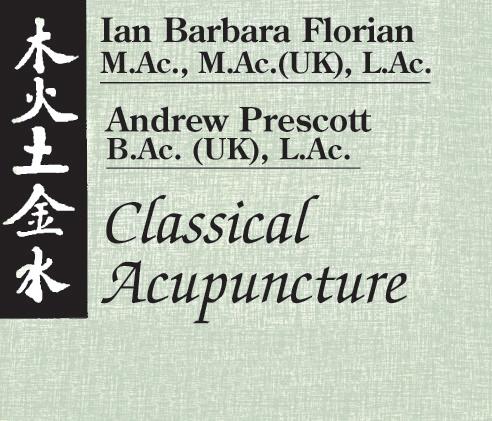
4/21/23 Lecture 7:30pm: The Broken Mirror: Obstacles to Seeing Ourselves Clearly
4/22/23 Workshop 10am-1pm: Inner Resources for Abundant Living WEBINAR pre-registration JungNC.org
919-416-0675

Software Engineer III
Software Engineer III, F/T at Truist Bank (Raleigh, NC)
Deliver highly complex solutions w/ significant system linkages, dependencies, associated risk. Lead & perform dvlpmt efforts such as analysis, dsgn, coding/creating, & testing. Oversee & participate in testing, implmtn, maintenance, & escalated support of Truist’s most complex solutions. Must have Bach’s deg in Comp Sci, Comp Engg, IT, or related tech’l field + 6 yrs of progressive exp in s/ware engg or IT consulting positions. In the alternative, employer will accept a Master’s deg in Comp Sci, Comp Engg, IT, or related tech’l field + 4 yrs of exp in s/ware engg or IT consulting positions. Must have at least 2 yrs of exp performing/utilizing the following: applying in-depth knowl in info systems & understanding of key business processes & competitive strategies related to the IT function to identify, apply, & implmt IT best practices; functional knowl in reqmt gathering, analysis, dsgn, dvlpmt, testing, implmtn, & deployment of applications; planning & managing projects & solving complex problems by applying best practices; providing direction & mentoring less expd teammates; & utilizing exp w/: Cloud CICD Pipeline (AWS & Azure); APIs; Ansible; D/bases: MySQL, PostgreSQL, & MS-SQL; Prgmg languages: Bash, Powershell, Python, & Ruby; Infrastructure Monitoring tools; Terraform; Containers; & Gitlab/Artifactory & source code mgmt.
Position may be eligible to work remotely but is based out of & reports to Truist offices in Raleigh, NC. Must be available to travel to Raleigh, NC regularly for meetings & reviews w/ manager & project teams w/in 24-hrs’ notice. Apply online (https://careers.truist.com/) or email resume w/ cvr ltr to: Paige Whitesell, Paige.Whitesell@Truist.com (Ref. Job No. R0074830).
Engineering Group Manager
McKim & Creed, Inc. (Raleigh, NC) to be rspnsble for prvding tchncl & dsgn srvces for mech. prjcts as part of a multi-dscplne prjct team to prdce mech., plmbing & fire prtction dsgn/construction drwngs & specs for institutional, cmmrcl, & indstrl fclties. Master’s in Mech. Engnring or equiv. Must know (thru acad training or work exp) mech. dsgn & HVAC systm anlyss; plmbing & fire prtction systms. Works remotely 100% of the time from the Eastern part of the U.S. Apply by visiting the following link: https://recruiting.ultipro.com/MCK1004MCKI/ JobBoard/f29e8f64-6bcd-4988-8fad-851c4970ffe4/ OpportunityDetail?opportunityId=108e780d-5591-4712b862-33c3103a1b36
To adver tise or feature a pet for adoption, please contact adver tising@indyweek.com
feature a pet for adoption, adver tising@indyweek.com

OFFICE/STUDIO SPACE
Move in ready Broad Street Cottage Ideal for therapist, integrative health and wellness coach or attorney. Close to Duke and Whole Foods. Please call Brenda at (919) 471-0100 or Michael at (919) 493-7633 for details and showing.
RECYCLE THIS PAPER
Senior QA Software Analyst Laboratory Corporation of America Holdings in Durham, NC seeks an Senior QA Software Analyst to identify, plan, & execute testing activities in an Agile/Scrum environment to ensure high quality software & compliance according to regulatory statutes, policies, & procedures. Reqs BS+4yrs exp., To apply, send resume to: labcorphold@labcorp.com ; Ref #230321.
LAST WEEK’S PUZZLE
To adver tise or feature a pet for adoption, please contact adver tising@indyweek.com

